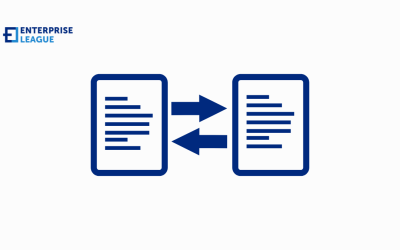How PDF Files have changed over time
In its early beginnings, PDF represented a static document with limited capabilities to handle just text-based content and primitive visual elements. However, the situation has gradually changed with the advancement of new digital experiences. So, PDF evolved greatly to meet the growing need to incorporate animations, video, audio, and various interactive elements within the files. Such a demand spurred the development of advanced PDF standards that have also touched upon the issues of safe document sharing, accessibility, and security.
Today, the format reigns supreme in publishing environments and is widely used by corporations, law firms, government institutions, healthcare facilities, and many more. The history of PDF files is a testament to the true power of innovation.
How PDF embraces innovation
PDF is now stronger than ever and continues to evolve, being eventually packed with even more powerful features. Let’s see how this popular format adapts to the changes of the modern digital world.
Integration with blockchain technology
Augmented and virtual reality
AR and VR opened up new avenues for enriched user experiences and expanded the capabilities of PDFs. Hence, the immersive nature of VR has transformed the way we interact with file content, meanwhile enabling us to examine virtual items in a realistic manner via 3D models and interactive simulations. Augmented reality, in turn, complements PDF documents by overlaying digital data onto the real-world setting. Users can enhance their reading experience with different interactive elements, videos, animations, and other multimedia content, which is particularly useful for education purposes.
Intelligent file processing
Artificial intelligence continues to advance and revolutionize the way we manage PDFs. Thus, AI algorithms aim to automate multiple tasks associated with PDF processing and can accurately analyze document content, extract the needed data, and structure it in a variety of formats. Another great thing refers to the AI-powered optical character recognition (OCR), which allows quick and simple text extraction from image-based or scanned PDF files, making unsearchable content fully accessible. AI also serves well for security enhancement as intelligent algorithms can automatically validate document integrity and authenticity.
Conclusion
Some things get only better with time, that’s accurately about PDF. As technology evolves, the boundaries of what may be achieved within the realm of this file format are continuously expanding, so the future perspectives for its transformation and growth are limitless. The seamless integration of technological advancements with PDF has revolutionized the way we interact with content and revealed tons of possibilities for enhancing our digital experiences. Meanwhile, the following PDF tips will help you get the most out of it:
- use PDF compressors to reduce your document size;
- add tables of content and bookmarks to enhance document navigation;
- use editing tools to make your files interactive and more visual;
- password-protect and sign a PDF online to boost its security;
- save web pages as PDFs for smooth exporting.
Once you leverage all the power of PDF, you will be surprised how versatile this format is. With that in mind, further advancements promise to drive even more efficiency into the document workflow.
More must-read stories from Enterprise League:
- Unique ways to show your employees you care about them.
- What it takes to start a wholesale business from scratch?
- Profitable online education business ideas that you should be aware of.
Related Articles
The 10 Ds of entrepreneurship: Why are they important?
Are you familiar with the 10 Ds of entrepreneurship? Let’s see if you possess some or all of them that will launch you for success.
Optimizing performance and reliability in managed file transfer systems
Optimizing the performance and reliability of MFT systems is a continuous process that requires attention to infrastructure, software and strategic processes.
Mobile auto detailing: Unlocking the secrets to a gleaming vehicle
From the major time savings of not having to drive to a detailing shop to the flexibility they provide, lets explore the top advantages of mobile auto detailer.
The 10 Ds of entrepreneurship: Why are they important?
Are you familiar with the 10 Ds of entrepreneurship? Let’s see if you possess some or all of them that will launch you for success.
Optimizing performance and reliability in managed file transfer systems
Optimizing the performance and reliability of MFT systems is a continuous process that requires attention to infrastructure, software and strategic processes.






